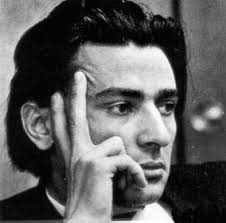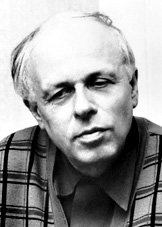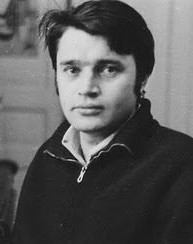The Committee for Human Rights in the USSR — consisting of Academician A.D. SAKHAROV and physicists Andrei N. TVERDOKHLEBOV and Valery N. CHALIDZE — was formed in Moscow on 4 November 1970.
*
Valery Chalidze (1938-2018)
*
The committee formulated five principles underlying its activities:
“1. The Committee for Human Rights is a creative association [1] acting in accordance with the laws of the land, with the Principles presented here, and with the Committee Statutes.
“2. Membership of the Committee is open to persons who, when acting as members, conform to these Principles and Statutes;
- who are recognised in this capacity by the Committee in accordance with the procedure laid down in the Statutes;
- who are not members of political parties or other organisations laying claim to participation in the government of the state, or of organisations whose principles permit participation in orthodox or oppositional political activities;
- who do not intend to exploit their membership of the Committee for political ends.
“3. The aims of the Committee’s activities are as follows:
- consultative assistance to the organs of government in the establishment and application of guarantees of Human Rights, carried out on the initiative of the Committee or of interested organs of government;
- creative assistance to persons engaged in constructive research into the theoretical aspects of the Human Rights question and in the study of the specific nature of this question in a socialist society;
- legal enlightenment, in particular the propaganda of international and Soviet legal documents on Human Rights.
“4. In its theoretical research into, and constructive criticism of, the present position of the system of legal guarantees of personal freedom in Soviet law, the Committee:
- takes as a guide the humanitarian principles of the Universal Declaration of Human Rights;
- bases its activity on a recognition of the special characteristics of Soviet law;
- takes into account the traditions which have developed and the real difficulties faced by the state in this sphere.
“5. The Committee is prepared to enter into contact with public and scientific organisations and with international non-governmental organisations, as long as their activities are based on the principles of the United Nations and are not aimed at harming the Soviet Union.”
The Statutes of the Committee for Human Rights lay down the structure of the Committee: the status of a “member”; an “expert”, someone who is not a member of the Committee but is acknowledged to be qualified in the field of Human Rights; and a “correspondent”, someone who is neither a member of the Committee nor an expert. They also list the procedure for the formal recording of the Committee’s resolutions and opinions.
*
Andrei Sakharov (1921-1989)
*
In accordance with the Statutes, Alexander Volpin and Boris Tsukerman (CCE 15.10 [8]) were elected as experts of the Committee.
In addition the Committee expressed its high regard for the contribution to the publicizing of Human Rights issues made by Alexander Galich [2] and A.I. Solzhenitsyn, and elected them as correspondents of the Committee.
In December the Committee studied Chalidze’s report [3] “Important aspects of the Human Rights situation in the Soviet Union”, a propos of which it adopted an “Opinion on the fundamental aspects of Human Rights in the Soviet Union”.
*
Andrei Tverdokhlebov (1940-2011)
*
On 21 December 1970 the US Newsweek magazine published Chalidze‘s replies to questions put by its Moscow correspondent about the Committee’s aims and the prospects for its activities.
====================================
NOTES
- «Творческий союз», ‘creative union or association’, a special status distinguished from a political party or a trade union.
↩︎ - Alexander Galich (1918-1977) was a successful screenwriter and playwright before he became a singer-songwriter, one of the Soviet Union’s first “bards” (CCE 16.7 [2]).
Galich helped establish a genre where words that mixed poetry, social comment and protest were sung, recited or declaimed to an often rudimentary guitar accompaniment. See Galich, Songs and Poems, edited and translated by Gerald S. Smith, Ann Arbor 1983; and G.S. Smith’s Songs for Seven Strings, Ann Arbor 1984.
↩︎ - Between 1969 and 1972, Valery Chalidze compiled and published 15 samizdat collections entitled “Social Issues”: see Contents, 16.1: Social Issues, Veche, Poiski, Obshchina.
↩︎
============================


